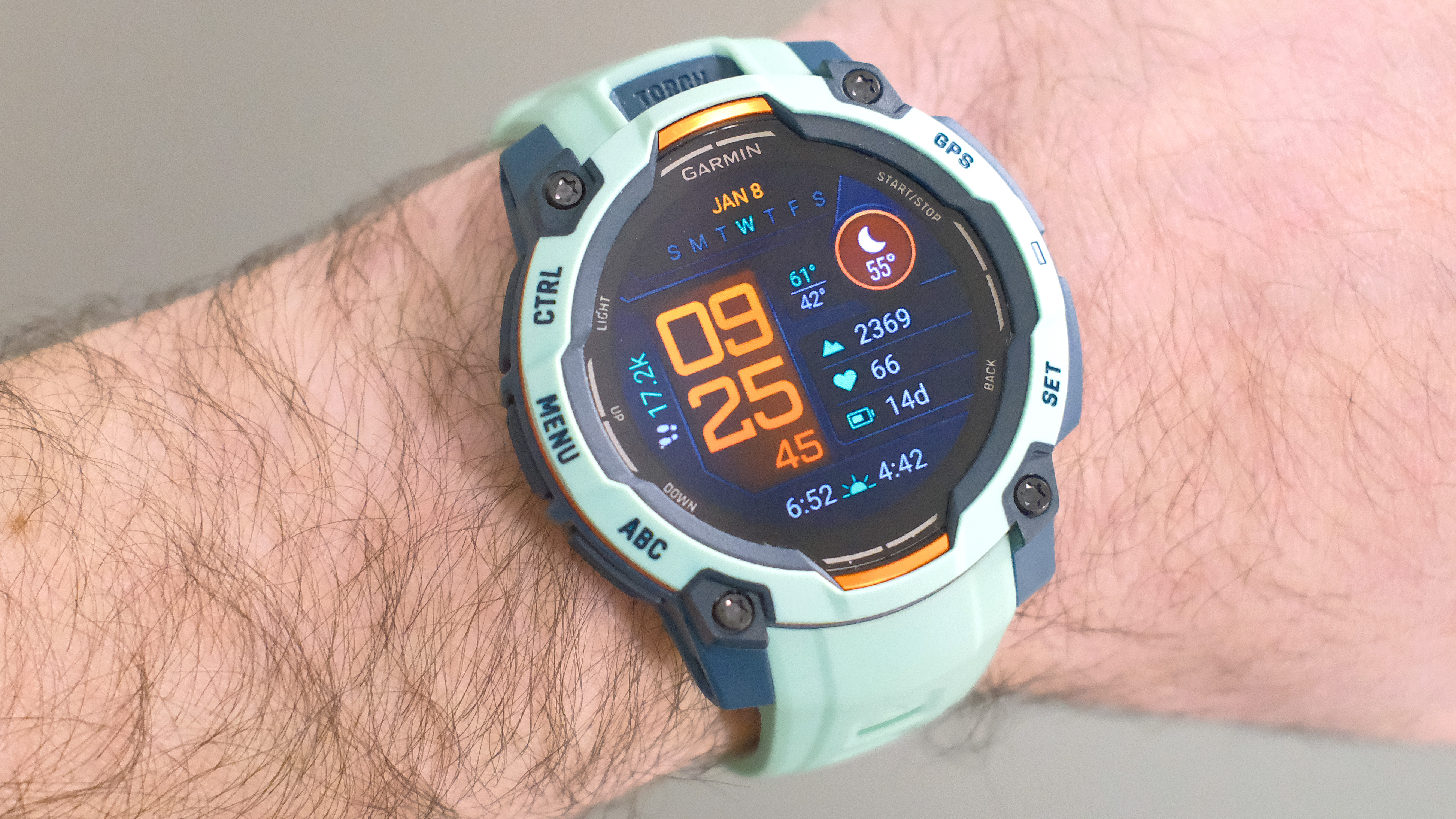Tom's Guide Verdict
The Garmin Instinct 3 is a near-perfect smartwatch for outdoor adventure enthusiasts thanks to a rugged and sporty design, weeks of battery life (rather than days), accurate GPS tracking, loads of training and recovery tools, useful sleep insights, support for a huge range of workout types and practical features like a built-in LED flashlight snd solar charging (on select models). It's also the first Instinct model with an optional AMOLED screen. The only thing missing is storage for music and maps.
Pros
- +
New larger 50mm size option
- +
Best-in-class battery life lasts for weeks at a time
- +
Solar models can technically last forever with enough sun
- +
AMOLED model improves daylight screen visibility
- +
Useful sleep and workout recovery insights
- +
100 meters of water resistance
- +
Built-in LED flashlight
- +
Accurate location and elevation tracking
Cons
- -
No 40mm Instinct 3 size option
- -
Doesn't support downloading maps for offline use
- -
No onboard storage for music
- -
Limited smart features
Why you can trust Tom's Guide
The Garmin Instinct 3 is a rugged smartwatch with weeks of battery life — rather than days like many of the best smartwatches in 2025 — and built with outdoor enthusiasts in mind. Perfect for tracking time spent in nature with support for an enormous range of activities and sports, I used the Instinct 3 to log my mountain hikes, urban bike rides and more than one day on the ski slopes.
Unlike some of Garmin's other popular smartwatch lines, including the Forerunner and Fenix series, the Instinct lineup is less about hardcore training and more about adventure and exploration. This ethos is evident in the watch’s design, combining bold and colorful elements with rock-solid usability and reliability. There are also practical features like a built-in flashlight and solar charging (on the non-AMOLED models).
As someone who vastly prefers the mountains to the gym, I know first-hand just how popular the Instinct series already is with the outdoors community. In fact, I’ve come close to purchasing the Garmin Instinct 2 for myself on numerous occasions.
So, when the Garmin Instinct 3 debuted in January, I couldn’t wait to get it on my wrist and see if it lived up to the hype. Some six weeks later, the verdict is in: The Garmin Instinct 3 is a fantastic smartwatch and a worthy successor to the hugely successful Instinct 2.
That said, the Instinct 3 is not the right option for everyone and falls short in several key areas. Still, it’s the smartwatch I’ll almost certainly reach for the next time I embark on an epic outdoor mission. Let’s get into it.
@tomsguide ♬ Vlog - Gaspar
Garmin Instinct 3: price and availability
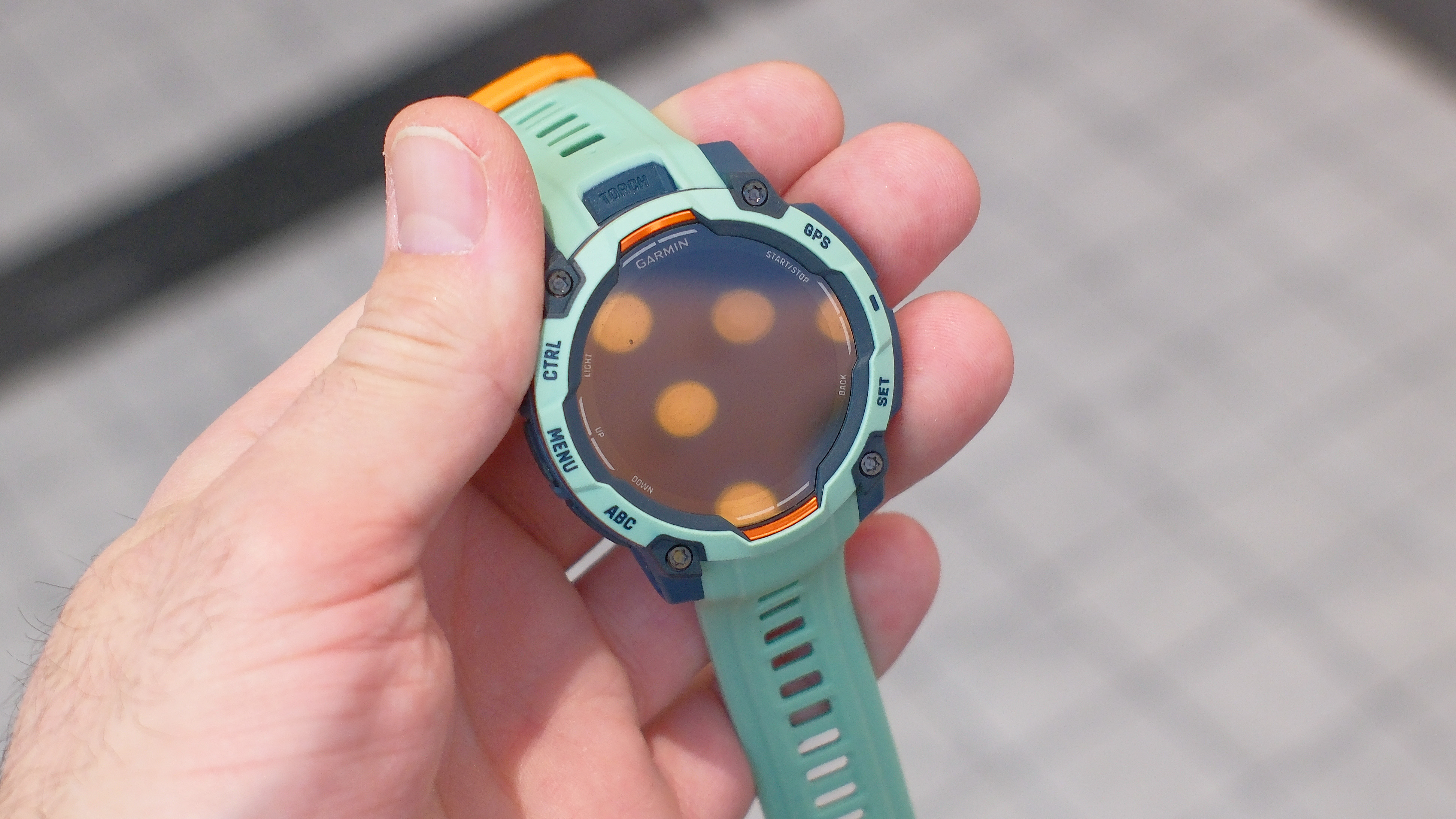
The Garmin Instinct 3 starts at $399 for the 45mm Solar model and increases to $449 for the larger 50mm Solar option, while the AMOLED models are $50 more a piece. The 45mm AMOLED is $449 and the 50mm AMOLED Instinct 3 is $499.
The more budget-friendly Garmin Instinct E, meanwhile, is priced at $299 whether you choose the smaller 40mm size or the bigger 45mm option. All of these models can be purchased directly through Garmin or major retailers like Amazon.
Garmin Instinct 3: models compared
| Header Cell - Column 0 | Instinct 3 Solar | Instinct 3 AMOLED | Instinct E |
|---|---|---|---|
Sizes | 45mm, 50mm | 45mm, 50mm | 40mm, 45mm |
Price | $399 (45mm); $449 (50mm) | $449 (45mm); $499 (50mm) | $299 |
Display | 0.9-inch (45mm), 1.1-inch (50mm) MIP | 1.2-inch (45mm), 1.3-inch (50mm) AMOLED | 0.86-inch (40mm), 0.9-inch (45mm) MIP |
Battery life (smartwatch mode) | 28+ days+ (45mm); 40+ days (50mm) | 18 days (45mm); 24 days (50mm) | 14 days (40mm); 16 days (45mm) |
Battery life (with GPS tracking) | 100+ hours (45mm); 150+ hours (50mm) | Up to 68 hours (45mm); up to 86 hours (50mm) | Up to 43 hours (40mm); up to 50 hours (45mm) |
Weight | 52 g (45mm); 58 g (50mm) | 53 g (45mm); 59 g (50mm) | 41 g (40mm); 48 g (45mm) |
Garmin Pay (NFC) | Yes | Yes | No |
Metal-reinforced bezel | Yes | Yes | No |
LED flashlight | Yes | Yes | No |
Garmin Instinct 3: key upgrades
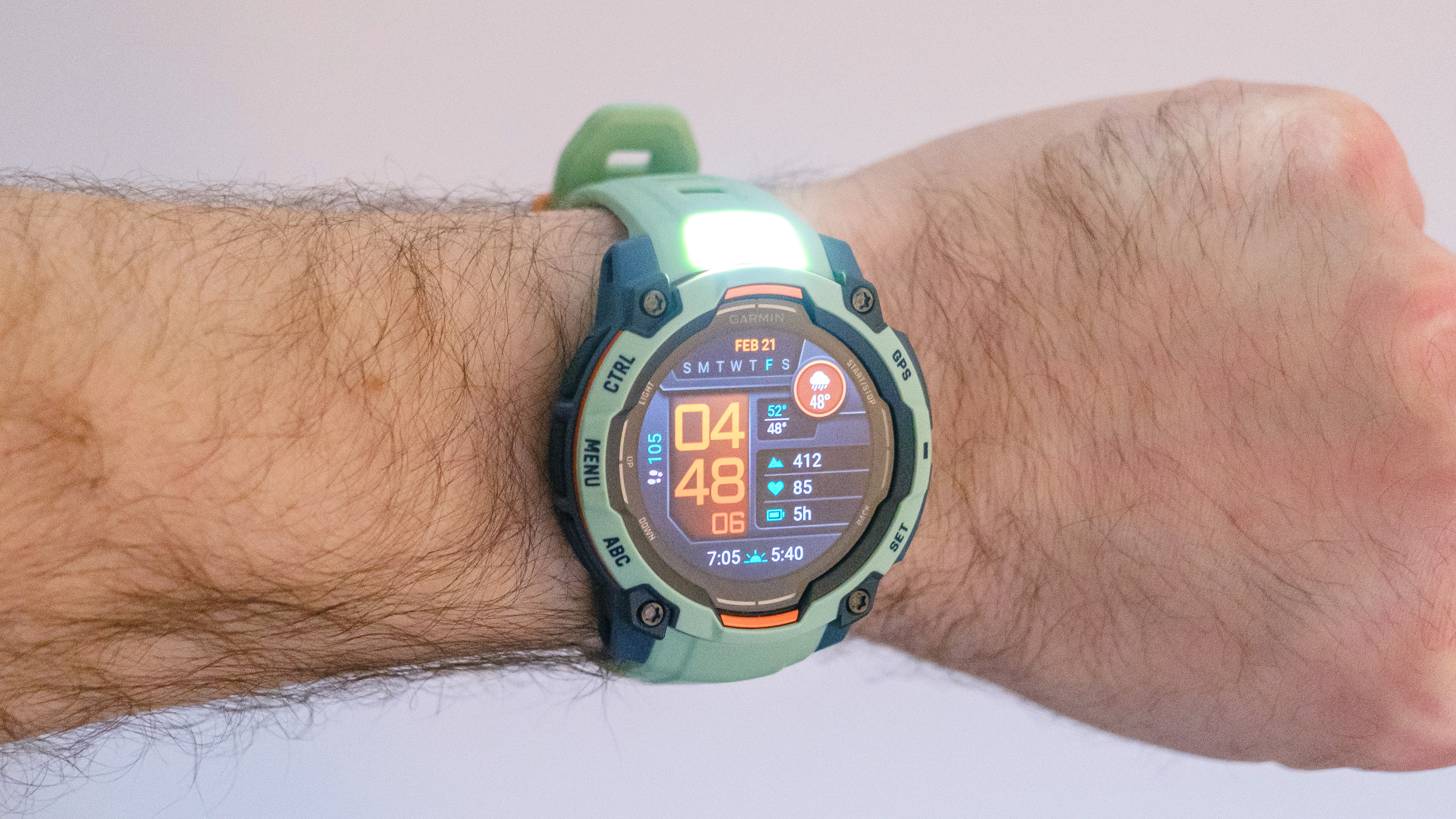
Compared to the Garmin Instinct 2, the Instinct 3 offers a handful of notable upgrades while maintaining a similar basic design and control layout. Water resistance remains an impressive 100 meters — suitable for the vast majority of aquatic activities save for deep sea diving —but the overall build should be more durable thanks to a new aluminum-reinforced bezel.
Additionally, the GPS has been upgraded from single-band to multi-band, which means improved location tracking accuracy in tricky settings with obstructed skies, like dense cities and wooded areas. While not quite either of those, I was able to successfully track a day spent indoors roaming the cavernous and endless CES tradeshow floor in Las Vegas using the Instinct 3, an impressive feat given the widespread lack of windows/access to daylight/skies.
This is the first Garmin Instinct model to sport an AMOLED display, which is brighter, more saturated and overall easier on the eyes than the Memory in Pixel (MIP) screens used on prior Instinct models. However, the Instinct 3 Solar sticks with a MIP display in exchange for a near-infinite battery (if given enough access to the sun).
Additionally, a small yet mighty-bright LED flashlight adorns the case of the Instinct 3, tucked under the bezel near the 12:00 position. It has five output levels as well as a red-tinted mode (just in case you need to develop some 35mm film).
Finally, not necessarily an upgrade but a change, while the Instinct 2 came in 40mm, 45mm and 50mm (Instinct 2X Solar), the Instinct 3 is available in only 45mm and 50mm, though a cheaper and paired-back Instinct E model comes in 40mm for folks with smaller wrists.
Garmin Instinct 3: design and wearability
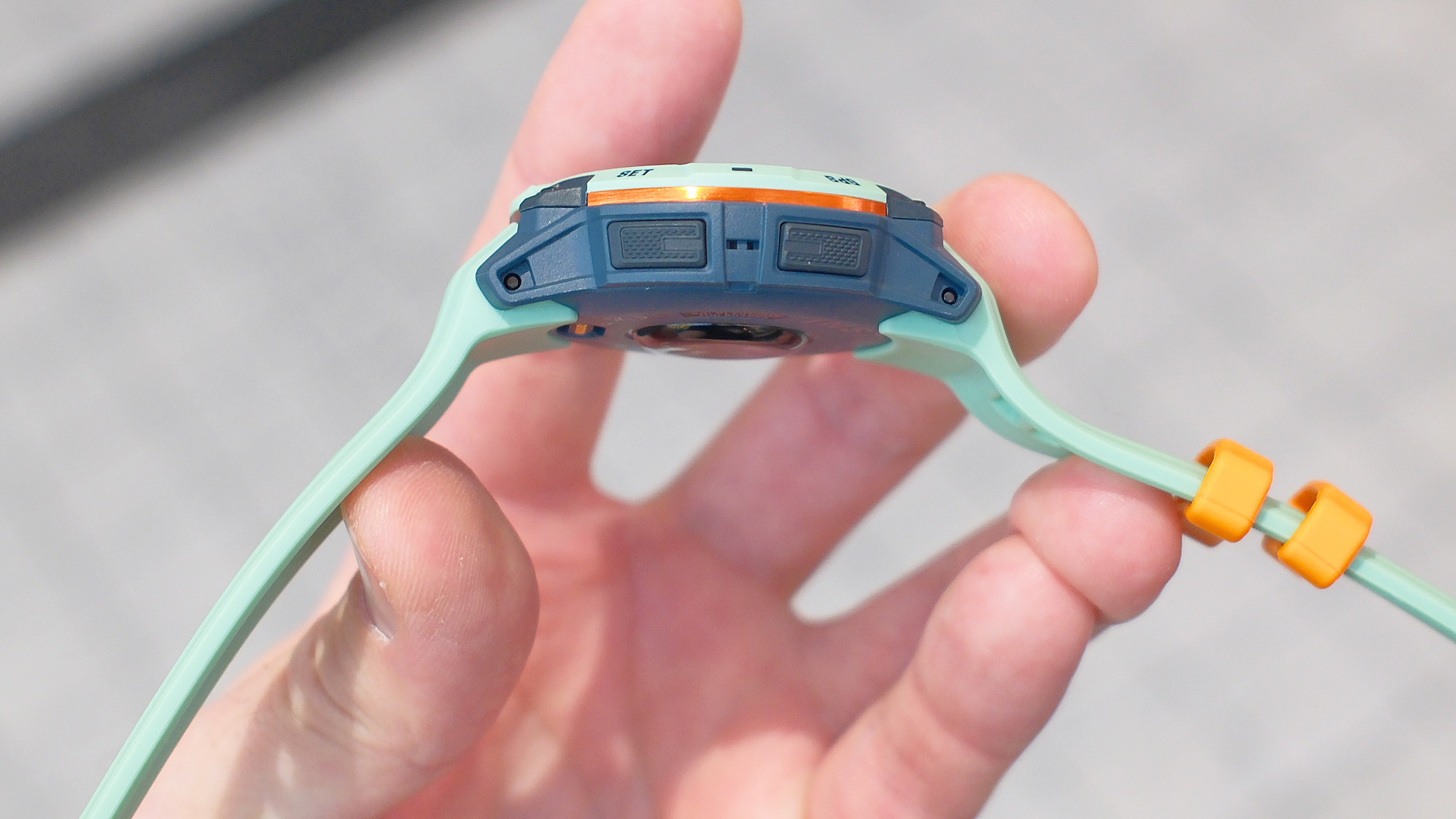
Design-wise, Garmin didn't fix what wasn't broken. And for that, I'm relieved. Instead, the brand took a great smartwatch and added genuinely useful improvements, without sacrificing battery life or straying from its sporty-meets-rugged stylings.
There is, as noted above, a new larger 50mm size option. I tested the more reasonably proportioned (for my 6.5-inch wrist) 45mm AMOLED model which I found comfortable for daytime wear but less so while sleeping. At 14.4mm thick, the Instinct 3 is the same thickness as another popular outdoor adventure watch, the Apple Watch Ultra 2 which I also don't find particularly comfy to sleep in.
The brighter AMOLED screen on the Instinct 3 is legible in direct sunlight, but nowhere near as bright as the display on the Ultra 2. (Here's a closer look at how the Instinct 3 vs Apple Watch Ultra 2 compare).
The Instinct 3 maintains Garmin's tried-and-true five-button interface, which will take some getting used to for newbies. The screen is not touch-sensitive, so wrapping one's head around the physical UI is a must. Here's a hint, all of the buttons have primary and secondary functions depending on how long you press them for. You can also customize them all.
My favorite design element of the Instinct 3 can be accessed via a long press of the control button (upper left). This turns on the new LED torch flashlight. As noted above, the illumination can be adjusted in five steps and there's also a red light mode which I found useful when needing to navigate a hotel room in the dark without waking up my sleeping partner.
Garmin Instinct 3: workout and adventure tracking
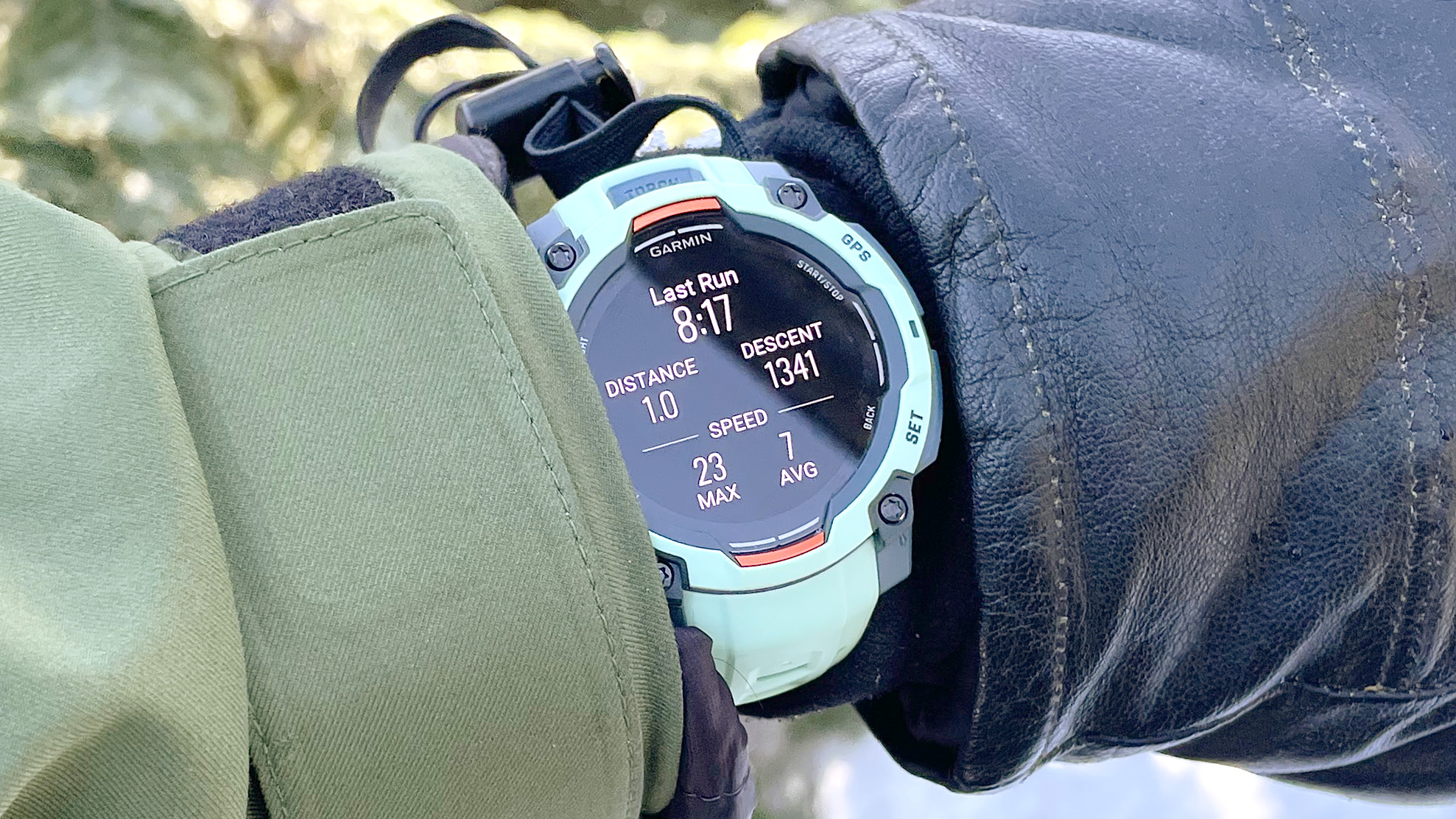
The Garmin Instinct 3 tracks a huge selection of popular outdoor activities. For biking alone, there's a standard bike tracking mode but also separate modes for indoor biking, ebiking, mountain ebiking, standard mountain biking, gravel biking, bike commuting, bike touring, cyclocross and road biking.
Other popular trackable outdoor activities include bouldering, snowmobiling, disc golf, ultimate frisbee, whitewater rafting, resort skiing/snowboarding, backcountry skiing and surfing. That said, there are some odd omissions. For example, the Instinct 3 does not currently support skateboarding, something I'd love to see addressed via future firmware.
With so many sports profiles to select from, the easiest way to quickly access your tracking modes of choice is to use the Garmin Connect app to add those activities as your 'favorites.' This makes them a push of the GPS button away.
In my six weeks with the Instinct 3, I used it to keep tabs on a range of workouts and adventures including four epic days of snowboarding in two different locations, numerous walks and urban hikes, one long bike ride around Seattle, Washington and an exhilarating day of snowmobiling in the British Columbia wilderness.
While recording an activity, there are five different screens you can scroll between showcasing a range of real-time holistic metrics and location/weather info. All of the data fields on these screens can be customized to your heart's content for individual activities. However, out-of-box, there's little I'd change in terms of the Instinct 3's default snowboard data. All of the key metrics I care about most, like top speed, elevation, ride time and heart rate are easily viewable.
Using the Instinct 3 in both the mountains, the city and the bowels of Las Vegas, I had zero issues with GPS tracking accuracy. While I can't say for sure whether it's measurably improved over the Instinct 2, I'll tell you this: The vast majority of times I began tracking an activity, the watch's GPS acquired a signal quickly and maintained it for the duration of my workout. Additionally, upon close inspection of all my post-workout routes, I found no weirdness or anomalies.
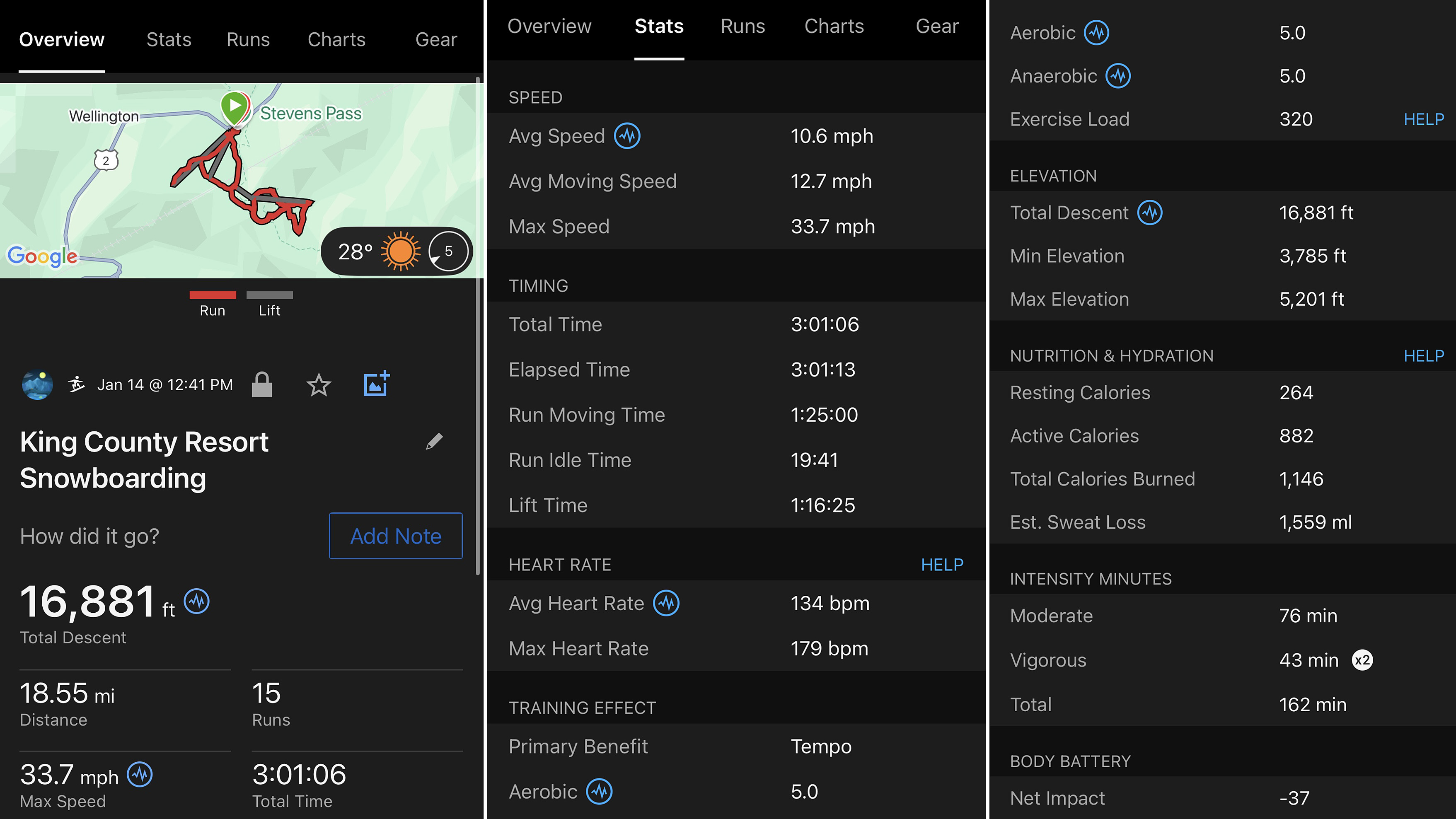
It's worth noting that the Instinct 3 doesn't have all of Garmin's high-end training tools. Several that are missing include the Endurance Score and Hill Climb Score. However, I suspect that most prospective Instinct 3 customers won't mind their absence.
Speaking of hills, I was pleased with the device's ability to accurately parse my snowboard riding time from ski lift riding time, a notoriously tricky task when you consider the fact that ski lifts don't only go up and ski trails don't only go down.
Post-workout, you're greeted with a huge buffet of metrics along with recovery insight and a route map of your efforts. The latter is something I came to appreciate while testing the Instinct 3 in new skiing terrain. This made it easy to figure out which runs I'd gone down after the fact; the best ones I made sure to hit the next day.
You also get recovery time suggestions, though I didn't find them all that useful. For example, after my first day out snowboarding with Instinct 3, it informed me that I should rest for a whopping 96 hours before taking on another physical challenge, a suggestion I felt was more than overkill.
I chalk up that longer-than-expected recovery time to the device not yet being fully acquainted with my active lifestyle. Still, when I tracked another day of snowboarding roughly a month later, my recovery time was 72 hours.... a little less but still longer than expected. (I waited 24 before hopping on the board again.)
Compared to other smartwatches, the Instinct 3's heart rate data appears to be right on the money. That said, the device isn't using Garmin's latest Elevate Gen 5 sensor but rather the less accurate and older Gen 4 one found in the Instinct 2.
Garmin Instinct 3: sleep and health tools
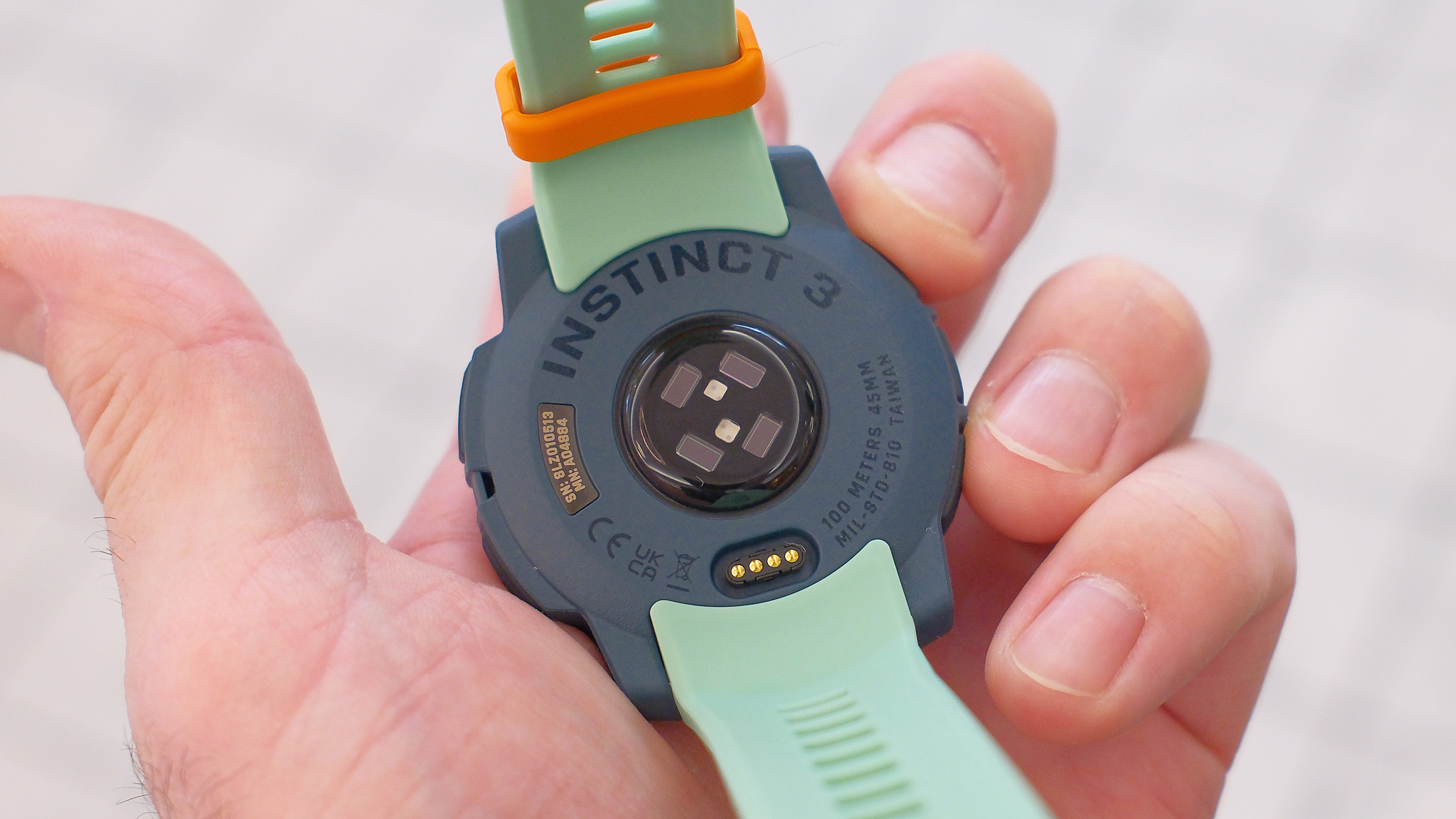
The Garmin Instinct 3 is capable of monitoring sleep quality though the somewhat chunky design makes it a tad uncomfortable to wear to bed, IMHO. Personally, I'd rather track my sleep with one of the best smart rings, but I digress.
Like most modern Garmin watches, users are greeted with a daily Morning Report with details on how well-rested they are. These include metrics for sleep duration and time spent in both deep sleep and REM. The morning report additionally includes a look at your HRV status and whether it's in a normal range for your age. There's also a Training Readiness Score based on prior workouts and sleep quality. Plus, you get a daily (and often cheesy) motivational message like, 'Let's do this!' or 'Listen to your body!'
The Morning Report pops up automatically once Garmin thinks you're up for the day. However, it's easy to accidentally miss one. This happened to me several times when I awoke and took the watch off without thinking to glance at the screen first. There were also several instances when I took the watch off in the early am hours before going back to sleep soundly. While the device has nap detection, it only works if you're actually wearing it. As a result, my sleep scores for those nights were in the garbage bin.
Ultimately, once I got over the initial ick of wearing the Instinct 3 to bed, I began to notice some of my habits changing for the better based on the device's sleep insights. For example, I've become much more aware of how consuming even the smallest amount of alcohol too close to bedtime can vastly diminish REM and deep sleep time. As a result, I'm skipping that cheeky nightcap more often (thank you, Garmin).
The Instinct 3 also has Garmin's Body Battery feature, which is kind of like the Training Readiness Score but updated in real-time throughout the day. This is a useful metric to keep an eye on during those long/epic outings in nature where excitement may overshadow exhaustion. For example, I referenced it toward the end of a recent snowboard powder day while trying to decide whether to do a few more runs or call it quits.
In addition to a heart rate sensor, the Instinct 3 can be used to measure your blood oxygen saturation in roughly 30 seconds. However, there's no ECG sensor. The device also doesn't monitor for sleep apnea like the Apple Watch 10 or Google Pixel Watch 3, two of the best smartwatch models in 2025.
Garmin Instinct 3: navigation tools
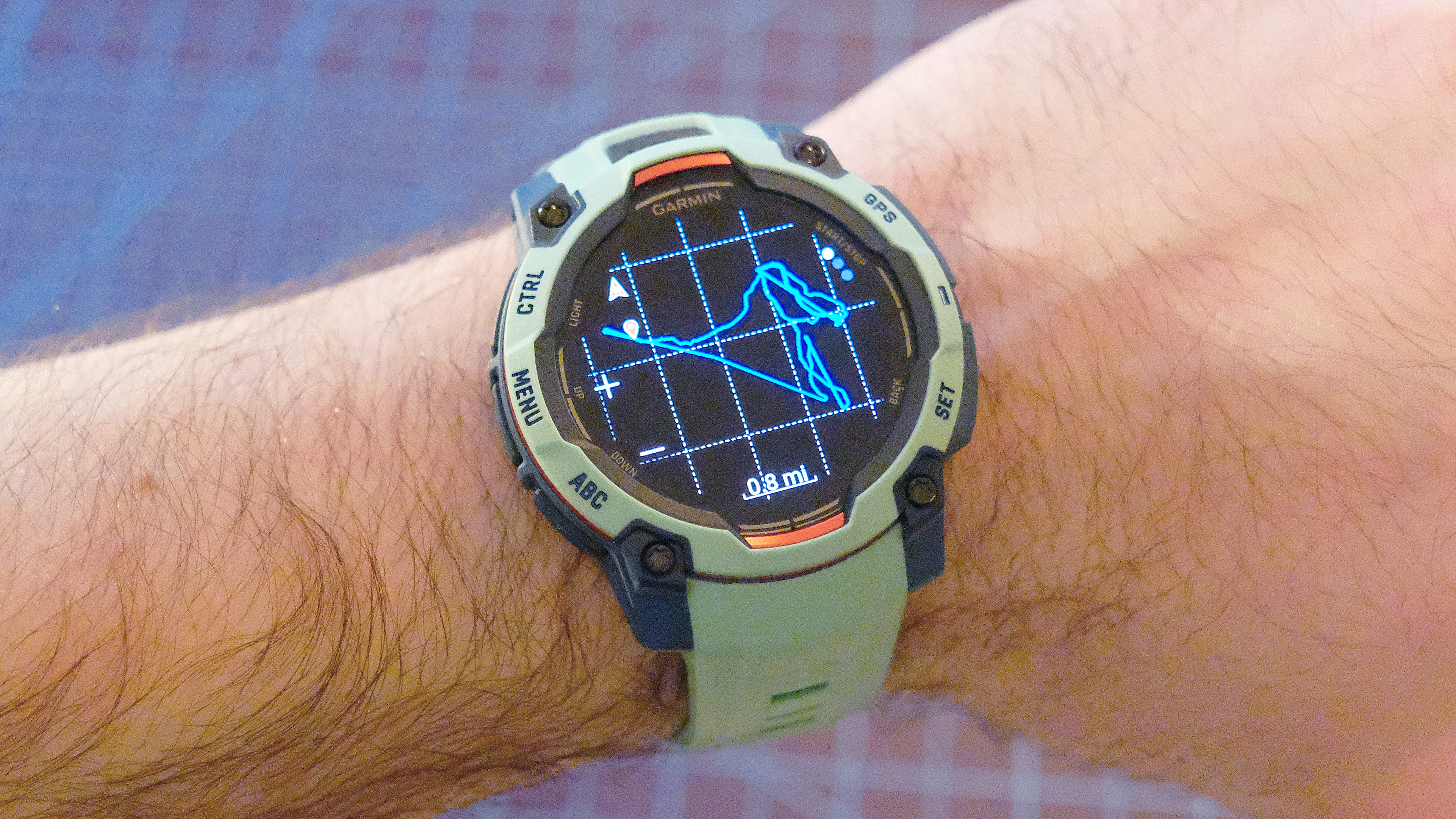
Perhaps my biggest criticism of the Instinct 3 is that it lacks out-of-the-box support for downloading and saving detailed topographic maps. For this feature, you'll need to step up to one of the brand's far-pricier models, like the Forerunner 965 or Fenix 8. Or, if you look outside of Garmin, you can get offline maps for just $99 via the Amazfit Active 2, though that model lacks the ruggedness of the Instinct 3. You also don't get as comprehensive training and recovery tools.
Depending on your needs, though, the expense of one of the higher-end Garmins may be worth it. I say this because the advantage of having a wrist-based map with rerouting functionality and detailed geographic landmarks is a total game-changer when you're exploring outside of cell service range.
Still, the Instinct 3 has some tools to help you find your way. For example, Garmin's TracBack feature will guide you back to the starting point of any tracked activity. And, using the Garmin Explore app on your smartphone, you can pre-create routes and export them to the Instinct 3 for breadcrumb-style offline navigation. However, the usefulness of this feature is somewhat limited as there is no rerouting and the map display is seriously lacking in detail.
The Garmin ConnectIQ Store does offer several map-based navigation apps, including Komoot and dwMaps but they require a paired smartphone with cell service.
For folks who prefer navigating the old-school ways, I have some good news. A long press of the ABC button pulls up the device's altimeter, barometer and compass view where you can check in on your current altitude, weather conditions and direction.
Garmin Instinct 3: smart features and safety tools
The Garmin Instinct 3 doesn't have much by way of smart features or connectivity. This is especially true when compared to the likes of the best Apple Watch and the best smartwatches for Android users.
Still, the ConnectIQ store offers some useful third-party apps. For example, for my fellow coffee connoisseurs, you can connect your Starbucks Card to pay for that latte.
Like the Instinct 2, the new model supports NFC payments via Garmin Pay and mirrors your smartphone notifications, both Apple and Android, you just won't be able to use the watch to reply to texts or take calls (there's no microphone or speaker).
Another missing feature is the ability to download music for offline listening. Garmin's specs indicate that the device offers virtually no onboard storage — the Solar models have just 128MB of memory capacity — which explains not only why you can't save music to the Instinct 3 but also why it doesn't support offline maps.
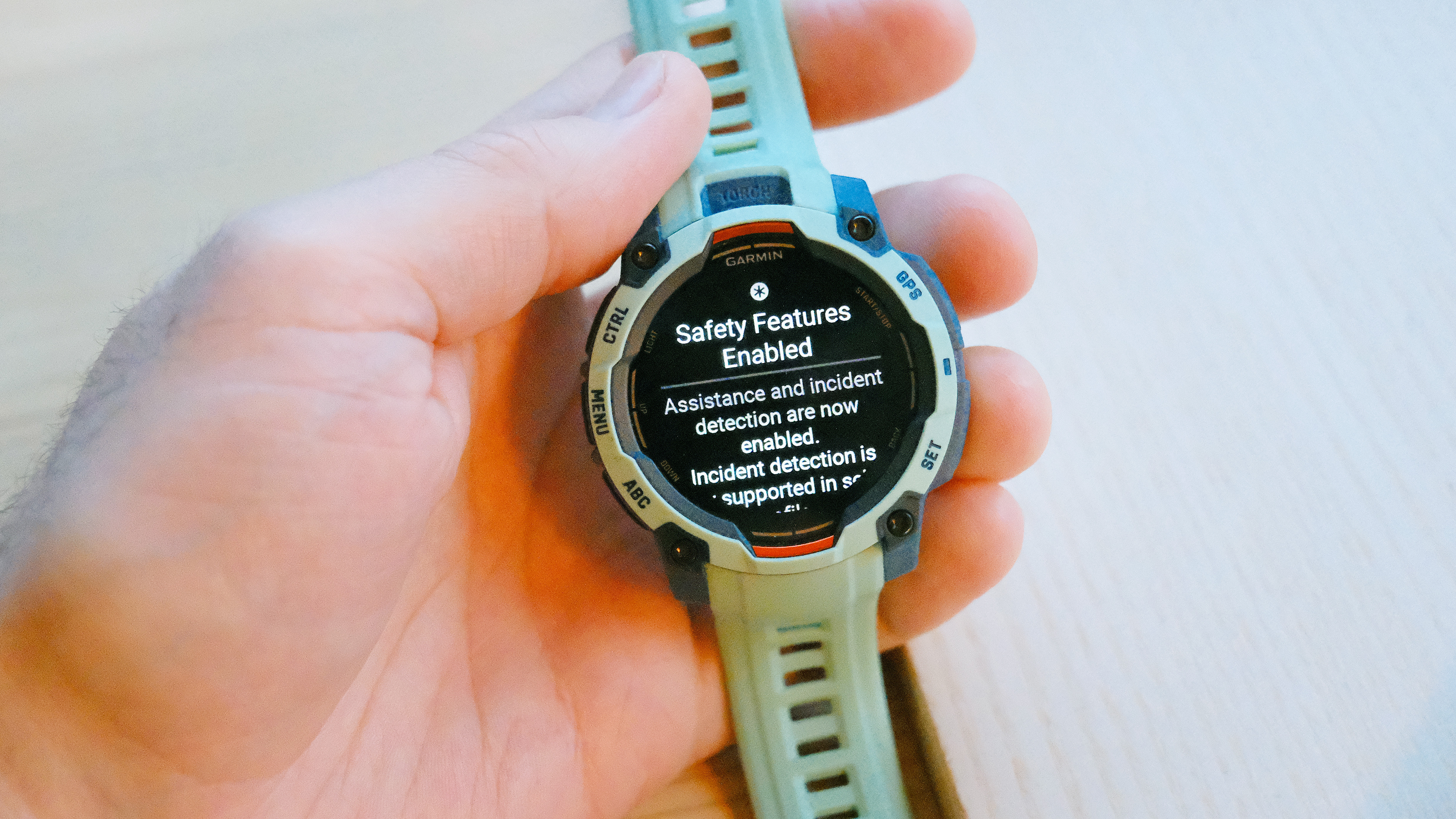
Despite a light offering of smart features, the Instinct 3 doesn't skimp out on safety tools. One of the most useful is Incident Detection, which works similarly to other brand's crash and fall detection features.
Once turned on Incident Detection can be triggered manually, if you feel unsafe or need help, or automatically if a fall/crash is registered. The feature lets you preselect up to three contacts to be notified in the event of an incident. These contacts will need to confirm their willingness once chosen (Garmin sends them a message).
Users can also choose whether they want Incident Detection to contact emergency responders when triggered. One downside, though, is that you'll need to carry your phone with you for the safety feature to work as it requires a cellular connection.
As someone who often bikes and hikes solo, I opted to add my girlfriend as my emergency contact (she accepted). I also appreciate the fact that you can turn Incident Detection on or off for individual activities. So, if you're riding a mechanical bull at a bachelor party, the Garmin won't mistakenly call for help with you're inevitably thrown from it.
Another useful safety feature is LiveTrack, which, unlike Incident Detection, doesn't require a cellular connection to work. Instead, it uses GPS data to generate real-time location tracking for approved trusted contacts.
So, if you're going out on a solo run or day hike, your partner or loved ones can follow along. LiveTrack needs to be set up through the 'more', tab in the Garmin Connect app. Like Incident Detection/reporting, you pre-select who gets notified when you start a trackable workout session. I chose to share my link via email but you can also share it through text or various social platforms.
Garmin Instinct 3: battery life
The Garmin Instinct series is for folks who dread the thought of seeking out a wall charger. In fact, with enough sunlight — roughly three hours per day — the Solar models can, in theory, last forever without needing a traditional juice-up.
The AMOLED models are rated for 18 days (45mm) and 24 days (50mm) in standard smartwatch mode. Of course, GPS tracking is a notorious power drain. Still, the AMOLED models are good for up to 68 hours (45mm) and 86 hours (50mm) when using 'Max battery GPS' mode. In standard tracking mode (with multi-band GPS), those numbers are closer to 23 hours and 30 hours, respectively.
The 45 Solar model gets 100+ hours of GPS tracking in Max battery mode and roughly 40 hours (with enough sunlight) in standard multiband tracking mode. The big Solar model should last for 150+ hours using Max battery mode and 60 hours with multiband.
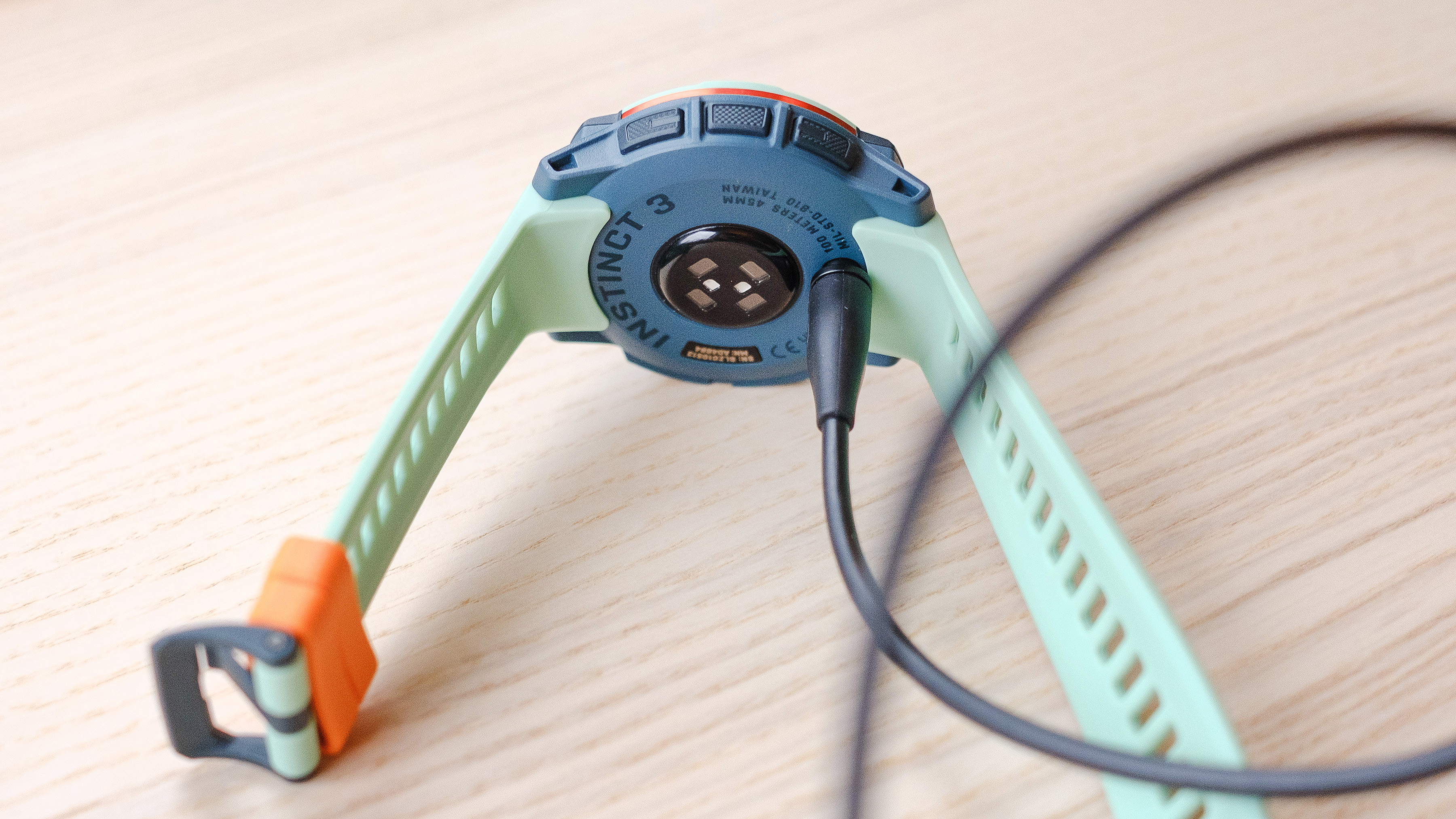
I spent six weeks with the 45mm AMOLED model and can count on one hand how many times I needed to stick it on the charger. In my first test with it, I used GPS to track a full day at CES 2025, where my seven-and-a-half-hour 'workout' drained just 16% of the battery. Not too shabby.
By comparison, the Apple Watch Ultra 2, another top-notch outdoor adventure watch, is rated for just 12 hours of GPS tracking (you can push that to 35 hours in low power mode but you sacrifice location and heart rate accuracy).
More recently, I wore the Garmin Instinct to track several days of glorious snowboarding at Whistler Blackcomb Mountain in British Columbia. While I recharged the Instinct 3 right before my last day of riding — an action-packed four-and-a-half-hour riding session where I covered 33 miles of terrain and 22.5K feet of vertical — it hasn't seen a charger since.
Seven days and several tracked workouts later — including a few short neighborhood walks and a one-hour 14-mile bike ride — the Instinct 3 is still sitting pretty at 23% battery.
It also charges up mighty quickly. In my earlier testing, it took roughly 90 minutes for the battery level to go from 15% to 100%.
Should you buy the Garmin Instinct 3?
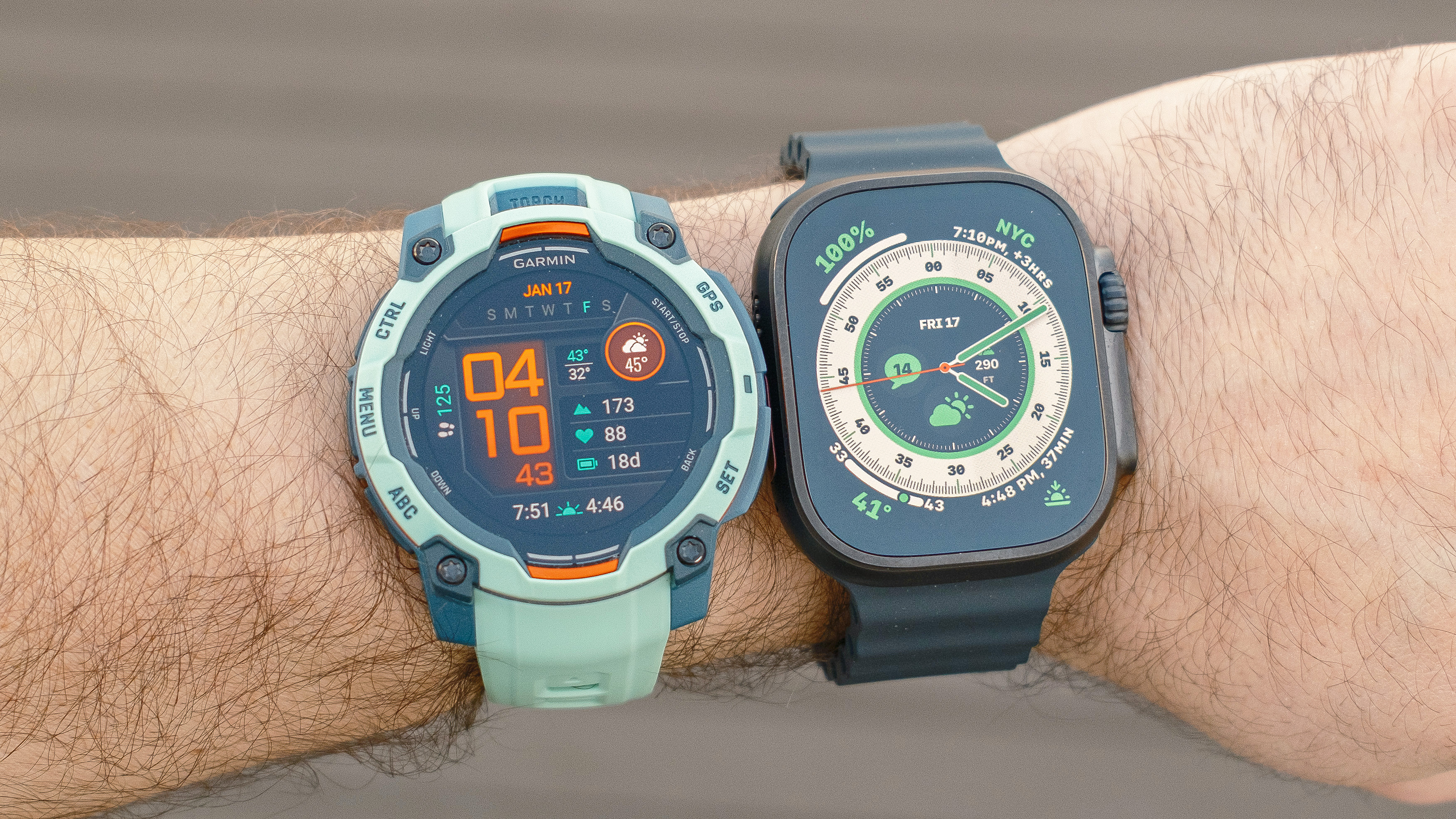
With a starting price of $399, the Garmin Instinct 3 offers most of the same features found on the $1,000+ Garmin Fenix 8 for a fraction of the cost. However, there are two notable absences: support for offline maps and music downloads. (Here's a closer look at the Instinct 3 vs. Fenix 8).
Garmin seems intent on maintaining the former as a premium-only feature found on only the brand's pricest wearables. In my opinion, this is an unwise move, especially when the competition, namely, Amazfit is including support for offline maps in $99 wearables.
Speaking of Amazfit, when it comes to long-lasting, tough-built outdoor adventure smartwatches that won't break the bank, the Amazfit T-Rex 3 is a direct competitor to the Instinct 3 for a little less cash. However, it's far chunkier and doesn't provide as reliable training and recovery tools, but it does keep tabs on a similarly huge range of outdoor activities.
The Coros Pace Pro is another worthy competitor to the Instinct 3 with support for offline maps. It costs a little less but doesn't offer the same battery longevity or durability. Still, it's a popular device amongst my TG colleagues; here's a closer comparison of the Instinct 3 vs. Coros Pace Pro, written by fellow writer Nick Harris-Fry.
Finally, another competitor worth considering is the Polar Grit X2 Pro which offers gorgeous offline maps and excellent navigational tools, not to mention, more thorough elevation metrics. However, it's pricier, $599, and features a grand total of zero smart features or third-party apps.
Unlike the other 17+ smartwatches in my desk drawer, I know that the Instinct 3 will be charged up and ready to roll when called upon
Given the option of any of those watches, I'd still choose the Instinct 3 as my number-one pick. Why? There's a reason that Garmin is one of the most popular smartwatch brands for both hardcore athletes and enthusiasts alike: Garmin's training and recovery tools are comprehensive yet easy to use, and Garmin's tracking accuracy and reliability are essentially the gold standard in the world of wearables.
The variety of Instinct 3 sizes and screen/charging options also give it more appeal than the competition, which mostly takes a one-size-fits-all approach, including not just the Amafit, Coros and Polar watches but also the premium Apple Watch Ultra 2 and Samsung Galaxy Watch Ultra.
Ultimately, the Garmin Instinct 3 is likely to remain my go-to smartwatch for outdoor adventures and sports. The reason for this is simple: Unlike the other 17+ smartwatches in my desk drawer, I know that the Instinct 3 will be charged up and ready to roll when called upon. I also know that it will record my efforts with precision.
Furthermore, the Instinct 3 logs all the metrics that matter most to me, supports nearly every workout I enjoy, looks cool/sporty on my wrist, has unique and useful functions — I now wish every smartwatch had an LED flashlight — and is built to take a licking and keep on ticking... just like me.
Should you get the Instinct E instead?
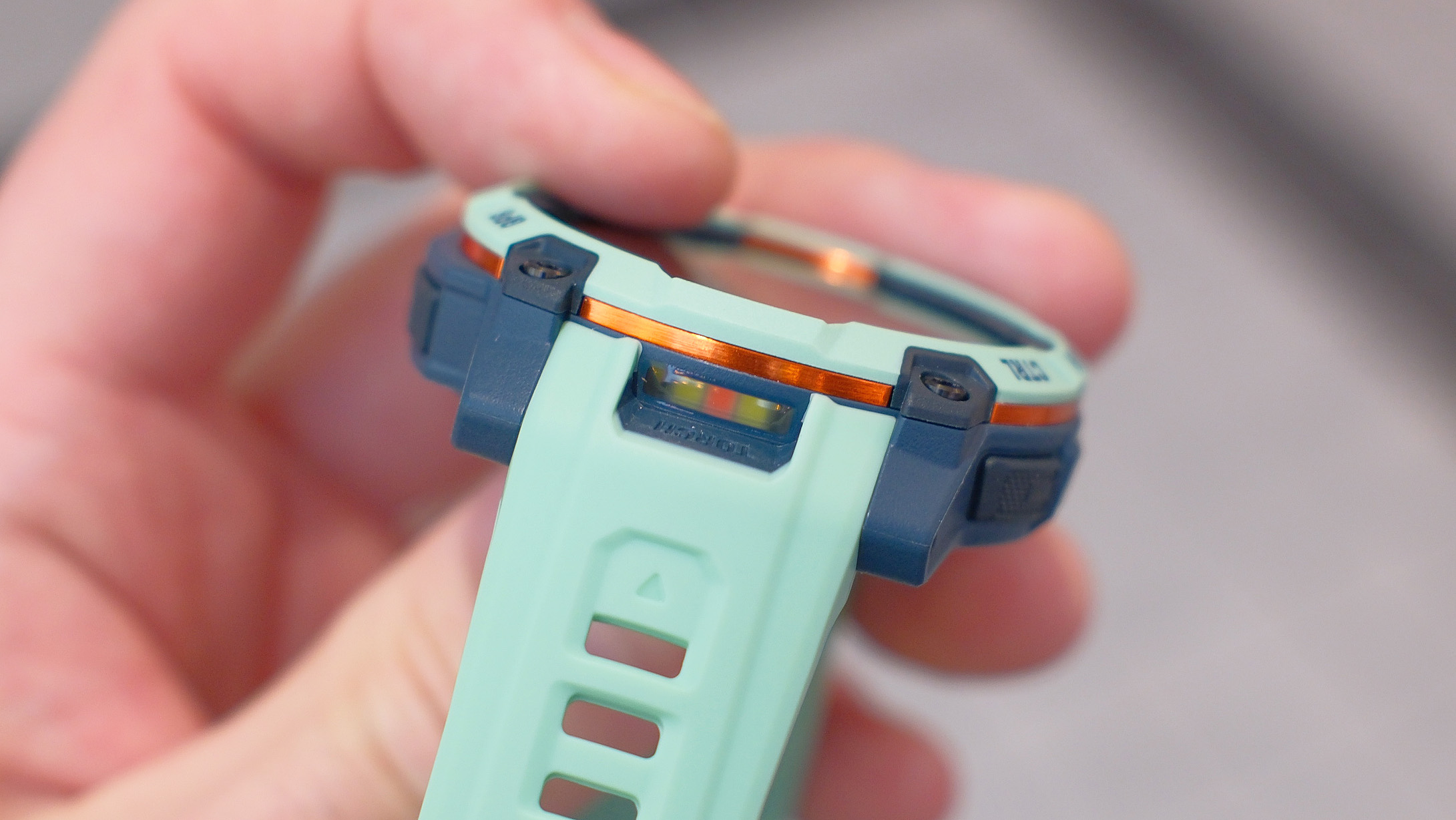
The Garmin Instinct E is a hundred dollars less than the cheapest Instinct 3 model (45mm Solar edition). Should you get it? The 45mm Instinct E features the same 0.9-inch memory in pixel (MIP) screen as the 45mm Solar. It also boasts respectable battery longevity, the same holistic sensors, identical sleep/recovery tools and records all the same activities. However, it lacks some of the more advanced features found on the higher-end models.
Perhaps most notable is the lack of the built-in LED flashlight. It also lacks NFC for mobile payments and multi-band GPS. Finally, the Instinct E has an all-plastic bezel instead of the new aluminum-reinforced one found on the Instinct 3. That said, water resistance is a match, at a respectable 100 meters.
So, is a tougher-built design, more precise GPS, support for Garmin Pay and the inclusion of an onboard flashlight worth $100? I'd say yes it is but your mileage may vary.

Dan Bracaglia is the Tom’s Guide editorial lead for all things smartwatches, fitness trackers and outdoor gear. With 15 years of experience as a consumer technology journalist testing everything from Oura Rings to instant cameras, Dan is deeply passionate about helping readers save money and make informed purchasing decisions. In the past year alone, Dan has assessed major product releases from the likes of Apple, Garmin, Google, Samsung, Polar and many others.
An avid outdoor adventurer, Dan is based in the U.S. Pacific Northwest where he takes advantage of the beautiful surroundings every chance he gets. A lover of kayaking, hiking, swimming, biking, snowboarding and exploring, he also makes every effort to combine his day job with his passions. When not assessing the sleep tracking and heart rate accuracy of the latest tach gadgets, you can find him photographing Seattle’s vibrant underground music community.
You must confirm your public display name before commenting
Please logout and then login again, you will then be prompted to enter your display name.
